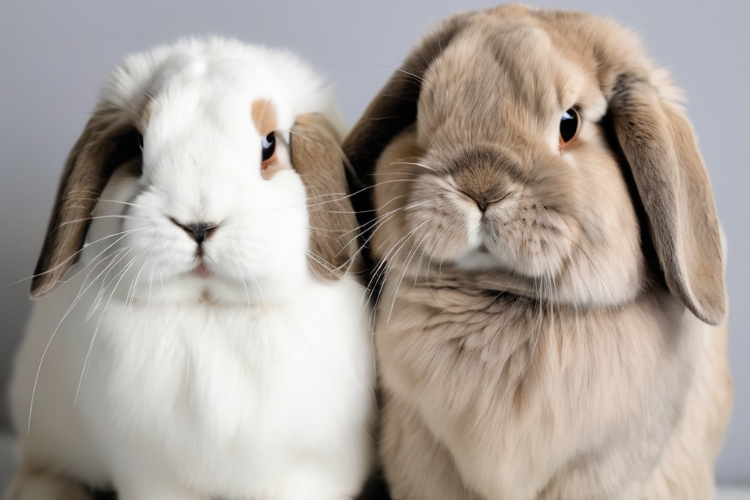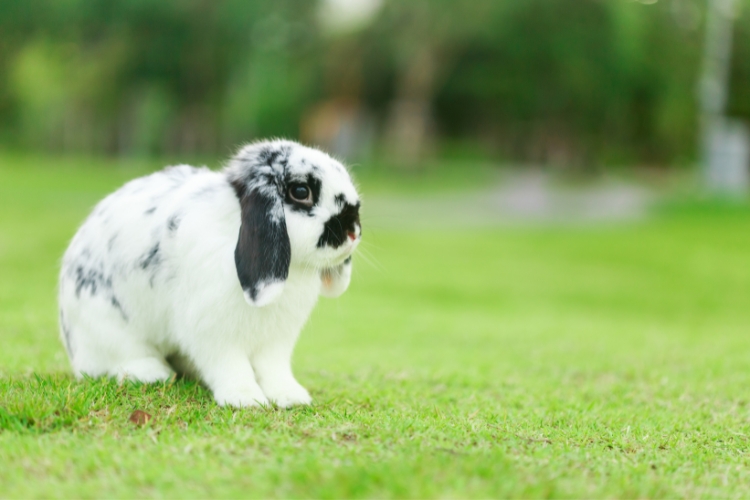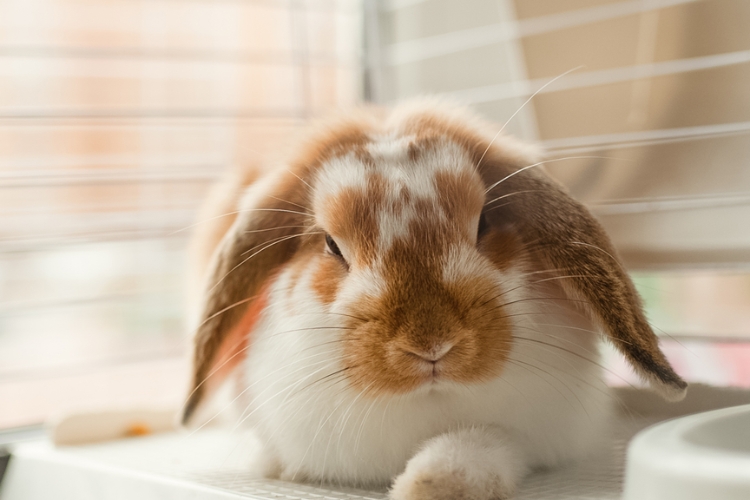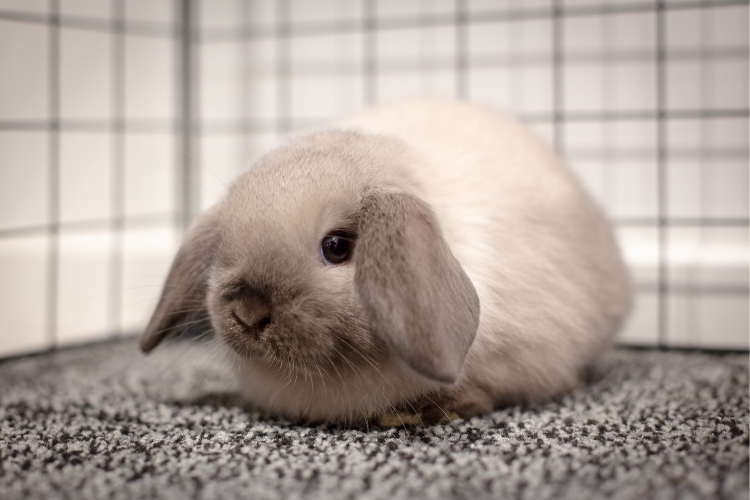The Holland Lop is a beloved rabbit breed known for its adorable, distinctive appearance and charming personality. These compact, furry companions have captured the hearts of rabbit enthusiasts worldwide, and their unique traits extend beyond just their physical features.
One of the most fascinating aspects of the Holland Lop breed is the diverse array of colors and varieties found within it.
In this blog post guide, we’ll explore the various types and colors of Holland Lops, providing insights into their origins, characteristics, and the standards that govern their breeding and exhibition.
Understanding the Holland Lop Breed
Before delving into the types and colors, let’s briefly discuss the Holland Lop breed itself. Originating in the Netherlands in the 1950s, the Holland Lop was developed by crossing small Netherland Dwarf rabbits with French Lops. This strategic breeding program aimed to create a compact rabbit with the distinctive lop ears and a well-rounded body type.
The Holland Lop is a dwarf breed, with adult rabbits typically weighing between 2 and 4 pounds. Their unique appearance is characterized by their small size, rounded body shape, and floppy ears that hang close to their faces.
These endearing features, combined with their gentle and affectionate personalities, have made Holland Lops popular pets and show rabbits.
Types of Holland Lops
While the Holland Lop breed is relatively uniform in terms of its physical characteristics, there are several recognized varieties within the breed. These varieties are primarily distinguished by their fur types and patterns.
1. Standard Holland Lops
The standard Holland Lop is the most common and widely recognized variety. These rabbits have a dense, short, and smooth coat that lies close to their bodies. Standard Holland Lops come in a wide range of colors, which we’ll explore in the next section.
2. Sable Holland Lops
Sable Holland Lops are a distinct variety characterized by their unique fur pattern. These rabbits have a rich, dark color at the base of their fur, with lighter tips creating a striking contrast. This pattern is known as the “sable” coloration and can be found in various shades, such as brown, black, or blue.
3. Siamese Holland Lops
Siamese Holland Lops are another fascinating variety that displays a distinctive color pattern. These rabbits have darker points on their faces, ears, feet, and tails, while their bodies are typically lighter in color. The most common Siamese Holland Lop colors are seal (dark brown) and blue (gray).
4. Tanned Holland Lops
Tanned Holland Lops are a relatively new variety that exhibits a unique color pattern reminiscent of a tan or sunburned effect. These rabbits have lighter fur on their bodies, with darker shades on their faces, ears, feet, and tails, creating a striking contrast.
Colors Found in Holland Lops
One of the most captivating aspects of the Holland Lop breed is the wide range of colors and patterns found within it. These colors are governed by recognized standards and guidelines set by rabbit breeding associations and organizations.
Solid Colors
Solid colors are the most common and widely recognized in the Holland Lop breed. These include:
- Black
- Blue
- Chocolate
- Lilac
- Ruby-Eyed White
Shaded Colors
Shaded colors are characterized by a distinctive lighter and darker shade within the same rabbit. The most common shaded colors in Holland Lops are:
- Tortoise (black and orange/red shading)
- Blue Tortoise (blue and cream shading)
- Siamese Sable (dark points with lighter body shading)
Agouti Colors
Agouti colors feature a distinct pattern of alternating light and dark bands on each hair shaft, creating a unique appearance. Some agouti colors found in Holland Lops include:
- Chinchilla (a combination of black and pearl/white bands)
- Squirrel (a mix of orange/red and black bands)
- Opal (a blend of blue and white bands)
Broken Colors
Broken colors are characterized by patches of solid color mixed with white fur. These can vary greatly in their patterns and distribution of colors. Common broken colors in Holland Lops include:
- Broken Black
- Broken Blue
- Broken Chocolate
Table: Common Colors and Varieties of Holland Lops
| Color/Variety | Description |
|---|---|
| Standard | Dense, short, smooth coat in various solid colors |
| Sable | Rich, dark base color with lighter tips |
| Siamese | Darker points on face, ears, feet, and tail with lighter body |
| Tanned | Lighter body with darker face, ears, feet, and tail |
| Solid Colors | Black, blue, chocolate, lilac, ruby-eyed white |
| Shaded Colors | Tortoise, blue tortoise, Siamese sable |
| Agouti Colors | Chinchilla, squirrel, opal |
| Broken Colors | Broken black, broken blue, broken chocolate |
Breeding and Exhibition Standards
The breeding and exhibition of Holland Lops are governed by strict standards set by recognized rabbit breeding associations and organizations. These standards ensure the preservation of the breed’s unique characteristics, including color and type.
When breeding Holland Lops, breeders must adhere to specific guidelines regarding coat color, pattern, and overall conformation. Rabbits that meet these standards are eligible for exhibition at shows and competitions, where they are judged against their peers.
It’s important to note that while color and variety are essential aspects of the breed, overall health, temperament, and adherence to the breed standard are equally important factors in responsible breeding practices.
Conclusion
The Holland Lop breed is a true testament to the diversity and beauty found within the rabbit world. With its various types, ranging from the standard smooth-coated variety to the distinct sable, Siamese, and tanned patterns, the breed offers a captivating array of colors and patterns. From solid hues to shaded, agouti, and broken colors, Holland Lops showcase a stunning spectrum of fur variations.
Whether you’re a seasoned rabbit enthusiast or simply appreciate the charm of these adorable companions, understanding the types and colors found within the Holland Lop breed can enrich your knowledge and appreciation of these delightful animals.
Remember, responsible breeding practices and adherence to established standards are crucial for preserving the integrity and well-being of the breed.




